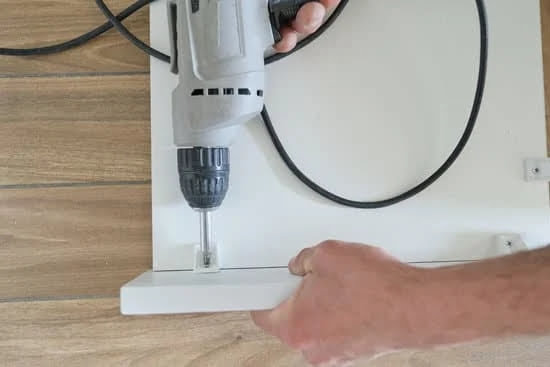What does original woodwork mean in the context of historical homes? Original woodwork refers to the authentic and antique wooden elements found in older properties, such as trim, moldings, doors, and built-in cabinetry. These intricate details are a vital part of historical architecture and provide a glimpse into the craftsmanship of the past.
In many historical homes, original woodwork serves as a testament to the construction techniques, design aesthetics, and cultural heritage of a bygone era. The preservation and maintenance of these elements are crucial not only for maintaining the authenticity of the property but also for ensuring the continued appreciation of its architectural value.
Understanding the significance of original woodwork goes beyond mere aesthetic appeal. It is about respecting the history and legacy of a property, honoring the skills of artisans who crafted these intricate details by hand, and preserving a tangible link to our architectural heritage. As we delve into the world of original woodwork in historic homes, we uncover a treasure trove of stories embedded in every carved motif and polished surface.
Definition of Original Woodwork
Original woodwork in historical homes holds a special significance as it embodies the craftsmanship and style of a bygone era. But what does original woodwork mean exactly? Original woodwork refers to the architectural elements and features made from wood that were present when the home was first built. These can include intricate moldings, ornate staircases, detailed trim work, and decorative panels, all showcasing the skill and artistry of the craftsmen who created them.
One of the key aspects of original woodwork is its authenticity. When we talk about original woodwork in historic homes, we are referring to pieces that have not been replaced or extensively modified over time. This authenticity adds to the charm and character of the home, providing a glimpse into its architectural heritage. Preservationists often prioritize retaining original woodwork during renovation projects to maintain the historical integrity of a property.
In addition to its aesthetic appeal, original woodwork also serves as a valuable historical record. The type of wood, style of carving, and techniques used in crafting these elements can reveal insights into the period in which they were created. By understanding the concept of original woodwork and its significance in architecture, homeowners and preservationists can make informed decisions when it comes to restoring or maintaining these unique features in historic homes.
| Original Woodwork | Importance |
|---|---|
| Authenticity | Retaining historical integrity |
| Historical Record | Insights into craftsmanship and design trends |
Types of Original Woodwork
Original woodwork encompasses a wide range of elements found in historical homes that are made from wood. This can include intricate moldings, decorative panels, built-in cabinetry, staircases, doors, and even hardwood floors.
Each of these components contributes to the overall aesthetic and character of a historic home, reflecting the craftsmanship and attention to detail of the time period in which it was constructed. Understanding the different types of original woodwork commonly found in historic homes can provide valuable insights into the architectural trends and styles of the past.
One common type of original woodwork found in historic homes is wainscoting, which consists of wooden panels that line the lower half of interior walls. These panels serve both a practical and decorative purpose, as they protect walls from wear and tear while adding visual interest to a room. Wainscoting comes in various styles, including raised or recessed panels, beadboard, and flat-paneled designs, each reflecting different periods of architectural history.
Another prominent example of original woodwork in historic homes is crown molding, which is used to adorn the junction between walls and ceilings. Crown molding can range from simple designs to elaborate patterns with intricate details, depending on the architectural style of the home.
This type of woodwork adds elegance and sophistication to a room, enhancing its overall appeal. Additionally, original woodwork such as window casings, baseboards, and mantels also play crucial roles in defining the character and charm of historical dwellings.
| Types | Description |
|---|---|
| Wainscoting | Wooden panels lining lower half of walls for protection and decoration |
| Crown Molding | Adorn junction between walls and ceilings with design variations |
| Window Casings/Baseboards/Mantels | Enhance character & charm through framing & decorative details |
Characteristics of Original Woodwork
Original woodwork in historical homes holds a unique charm and character that adds to the overall aesthetic and value of the property. Understanding the characteristics of original woodwork is essential for homeowners, historians, and preservationists alike. From intricate carvings to quality craftsmanship, original woodwork embodies the artistry and skill of craftsmen from bygone eras.
So what does original woodwork mean exactly? It refers to any wooden architectural elements in a home that are part of the original construction and have not been replaced or significantly altered over time.
Quality of Materials
One of the distinguishing features of original woodwork is the quality of materials used. In historic homes, you may find hardwoods such as oak, mahogany, walnut, or cherry used for moldings, paneling, doors, and trim work. These woods were prized for their durability and rich grain patterns. Additionally, old-growth timber was often utilized, which was known for its strength and stability compared to modern lumber.
Craftsmanship
The level of craftsmanship displayed in original woodwork sets it apart from mass-produced contemporary materials. Skilled artisans meticulously carved details such as floral motifs, geometric patterns, or figurative elements into moldings, staircases, mantels, and built-in cabinetry. Each piece was lovingly crafted by hand, showcasing the artisan’s expertise and attention to detail.
Aged Patina
Over time, original woodwork develops a unique patina that reflects its age and history. The natural wear and tear from years of use give the wood a warm hue and texture that cannot be replicated with new materials. This patina tells a story of generations past and adds depth to the character of historic homes. Proper maintenance and care can help preserve this aged appearance for future enjoyment.
Preservation of Original Woodwork
Understanding the Importance of Preservation
Preserving original woodwork in old homes is crucial for maintaining the historical integrity and character of the property. Original woodwork adds a sense of authenticity and charm to historic homes, reflecting the craftsmanship and design styles of a bygone era. By preserving original woodwork, homeowners can honor the history of their property and contribute to the preservation of architectural heritage.
Regular Cleaning and Maintenance
One of the key tips for preserving original woodwork in old homes is to establish a regular cleaning and maintenance routine. Dusting with a soft cloth, using a mild detergent or specialized wood cleaner, and waxing or oiling the wood surfaces can help prevent dirt buildup, maintain the natural luster of the wood, and protect it from damage. It is important to avoid harsh chemicals or abrasive cleaning tools that could potentially harm the delicate patina of original woodwork.
Protecting Against Environmental Factors
Another essential aspect of preserving original woodwork in old homes is protecting it against environmental factors that can cause deterioration over time. Exposure to sunlight, fluctuating humidity levels, temperature changes, pests, and moisture can all pose threats to original woodwork.
Implementing measures such as installing UV-resistant window treatments, using dehumidifiers or humidifiers as needed, sealing windows and doors properly, addressing any leaks promptly, and applying protective coatings or finishes can help safeguard original woodwork from potential damage. Regular inspections are also recommended to detect any signs of wear or issues early on for timely intervention.
By following these tips and techniques for preserving original woodwork in old homes, homeowners can ensure that these architectural treasures remain intact for future generations to appreciate and enjoy. Proper care and maintenance not only enhance the beauty and value of historic properties but also contribute to the ongoing legacy of craftsmanship and design that defines our architectural history.
Restoration of Original Woodwork
Restoring original woodwork in historical homes is a crucial aspect of preserving the architectural history and aesthetic beauty of these cherished properties. When we talk about restoring original woodwork, we are referring to the process of bringing old, worn-out wood features back to their original condition through careful cleaning, repairs, and refinishing techniques. This not only enhances the visual appeal of the home but also adds value to the property as a whole.
To successfully restore original woodwork, homeowners or restoration professionals must follow a series of steps and processes that ensure the preservation of these valuable historical elements. Some common steps involved in restoring original woodwork include:
- Assessment: Before beginning any restoration work, it is essential to assess the condition of the existing wood features. This involves identifying any damage, wear and tear, or previous attempts at repair that may impact the restoration process.
- Cleaning: One of the first steps in restoring original woodwork is thoroughly cleaning the surfaces to remove dirt, grime, old finishes, and other buildup that may have accumulated over time. This can be done using gentle cleaners or solvents that do not harm the wood.
- Repair: After cleaning, any necessary repairs should be made to address cracks, holes, dents, or other damage to the wood. This may involve filling in gaps with wood putty, replacing damaged sections with matching materials, or reinforcing weak areas for structural integrity.
Once the initial steps of assessment, cleaning, and repair have been completed, the next phase in restoring original woodwork is refinishing. Refinishing involves applying new coatings or finishes to protect and enhance the appearance of the restored wood features. This can include staining for color enhancement, varnishing for durability and shine, or painting for a fresh look while still maintaining the authenticity of the original design.
By following these meticulous restoration processes and techniques, homeowners can revive their home’s original woodwork to its former glory. The goal is not only to beautify these historical elements but also to ensure their longevity for generations to come. Original woodwork serves as a tangible link to our architectural past and deserves proper care and attention in order to be appreciated by future generations.
Value of Original Woodwork
Original woodwork holds a significant value in historical homes, contributing to the overall charm and character of these architectural gems. But what exactly does original woodwork mean? Original woodwork refers to any wooden elements within a house that were originally designed and installed when the home was built. This includes features such as trim, molding, doors, windows, staircases, banisters, and built-in cabinetry that were part of the original design and craftsmanship of the home.
To better understand the value and importance of original woodwork in historic home appraisal, let’s explore some key points:
1. Unique Craftsmanship: One of the primary reasons why original woodwork is highly valued in historic homes is due to the unique craftsmanship involved in creating these pieces. From intricate carvings to elaborate designs, original woodwork reflects the skill and artistry of craftsmen from a bygone era.
2. Historical Significance: Original woodwork plays a crucial role in preserving the historical integrity of a home. These elements provide a window into the past, showcasing architectural styles and techniques popular during the time when the house was constructed.
3. Aesthetic Appeal: Beyond their historical value, original woodwork adds aesthetic appeal to historic homes. The natural beauty of wood combined with detailed craftsmanship can enhance the overall look and feel of a property, making it more desirable for homeowners and prospective buyers alike.
Examples of Original Woodwork
When exploring historic homes, one of the most captivating features that often stand out is the original woodwork. But what does original woodwork mean? Original woodwork refers to the architectural elements in a home that were constructed using the original wood materials, typically during the time of the home’s construction. This can include items such as doors, windows, trim work, mantels, staircases, and built-in cabinetry that showcase the craftsmanship and design aesthetics of a bygone era.
In historic homes, original woodwork often serves as a window into the past, offering insights into the design trends and woodworking techniques prevalent during a specific time period. Some common types of original woodwork found in historic homes include intricate Victorian trim work, elaborate Arts and Crafts style built-ins, elegant Georgian crown molding, and rustic Colonial-era paneling. Each type reflects the architectural preferences and craftsmanship standards of its respective era.
One example of stunning original woodwork can be seen in a Queen Anne-style home built in the late 19th century. The intricate fretwork detailing on the staircase banister and porch railing showcases the ornate craftsmanship that was popular during the Victorian era.
Additionally, the hand-carved moldings around each door frame and window highlight the attention to detail and artisanal skills that went into creating these architectural elements. These real-life examples not only add character and charm to historic homes but also provide inspiration for homeowners looking to preserve or restore original woodwork in their own properties.
Conclusion
In conclusion, original woodwork is not just a feature of historical homes; it is a testament to the craftsmanship and artistry of artisans from bygone eras. Understanding what original woodwork means goes beyond recognizing it as simply wooden elements within a house; it embodies the spirit of a particular time period and architectural style. The intricate details, unique designs, and quality materials used in original woodwork contribute to the overall charm and character of historic homes.
Preserving original woodwork is essential in maintaining the authenticity and value of historical properties. By taking proper care and using appropriate preservation techniques, homeowners can ensure that these architectural gems remain intact for future generations to appreciate. Whether it be refinishing, repairing, or cleaning, investing time and effort into preserving original woodwork can significantly enhance the overall aesthetic appeal and historical value of a home.
In essence, original woodwork serves as a bridge between the past and present, allowing us to connect with history through tangible architectural elements. As we continue to appreciate and safeguard these valuable components of our built heritage, we contribute to the preservation of architectural history for years to come. So next time you encounter original woodwork in a historic home, take a moment to admire its beauty and significance in shaping our understanding of the past.
Frequently Asked Questions
Should You Paint Original Wood Trim?
Painting original wood trim is a personal decision that depends on various factors. Some people prefer to keep the natural beauty of wood exposed, while others choose to paint it for a different look. It’s important to consider the style of your home, your preferences, and the condition of the wood before making a decision.
What Does Woodwork Include?
Woodwork typically includes all wooden elements in a home, such as baseboards, crown molding, window casings, doors, and cabinets. It encompasses any decorative or structural woodworking elements that add character and charm to a space. Woodwork can vary in style and design depending on the architecture and the homeowner’s taste.
What Can You Do With Old Woodwork?
When faced with old woodwork, there are several options to consider before deciding its fate. You could opt to restore it by sanding down imperfections, refinishing it with a fresh coat of stain or paint, or repairing any damages.
Another option is repurposing old woodwork into new projects like furniture pieces or decor items to give them a second life. Ultimately, the choice depends on your creativity, budget, and desired outcome for the old woodwork you have on hand.

Hi everyone! I’m a woodworker and blogger, and this is my woodworking blog. In my blog, I share tips and tricks for woodworkers of all skill levels, as well as project ideas that you can try yourself.





